Stocks declined for the third consecutive week. The outlook for stocks might further deteriorate since any remaining supportive flows from options expiration (OPEX) have been exhausted. According to GammaLab, the S&P 500 remains within a negative gamma regime, indicating that dealers will sell during declines and buy during periods of strength. However, of greater significance, this implies that volatility will likely remain heightened, thereby sustaining an elevated VIX.
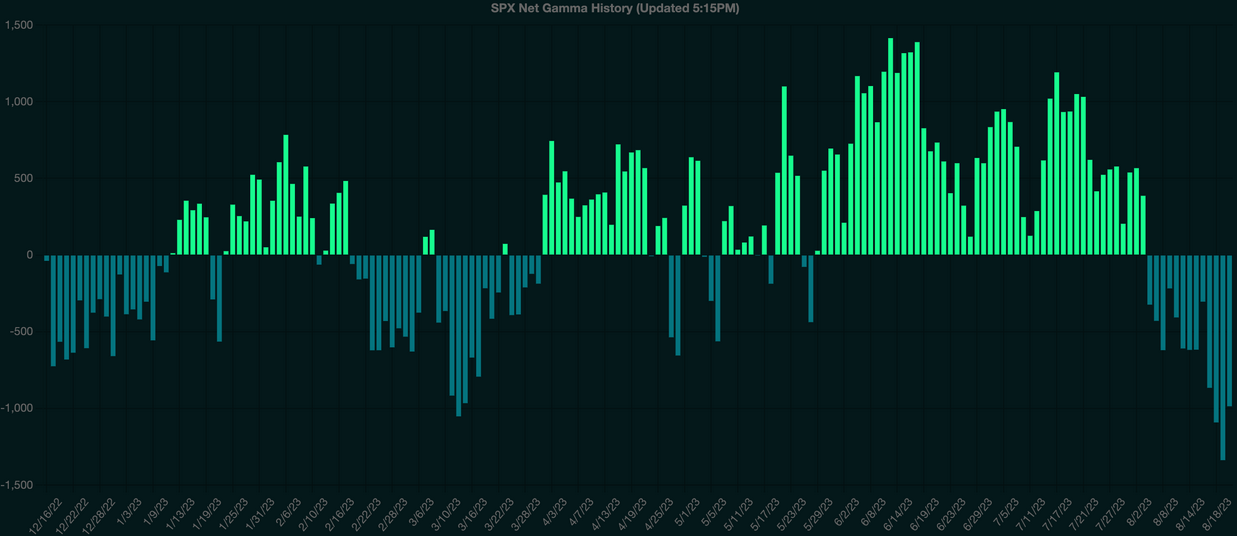
Furthermore, the recent downward shift in the indexes has prompted CTAs to shift their stance from buyers to sellers, introducing extra stress on the market. In the upcoming month, Goldman Sachs approximates that CTAs could potentially have up to $240 billion to sell of global equities.
Additionally, considerable downward pressure is emanating from Asian markets due to ongoing challenges faced by China’s economy. Hong Kong's Hang Seng index has experienced a decline of over 20% since its peak in early January. The index dipped below the levels of May 31 during the past week and is sitting on the edge of a further decline.

Meanwhile, a noticeable strengthening of the US dollar has emerged in relation to both the Chinese yuan and the Japanese yen. The yuan’s depreciation is attributed to China’s deteriorating economic conditions. In contrast, the yen’s depreciation arises from the Bank of Japan’s maintained accommodative monetary policy, contributing to a broader interest rate differential.
Consequently, the dollar index has surged to critical resistance levels near 103.50. This particular level holds key significance for the Dollar Index (DXY), as surpassing and moving beyond 103.50 would potentially initiate a substantial upward movement, initially targeting 104.60, followed by 105.90. This trajectory could return the index to levels observed before the SVB collapse.
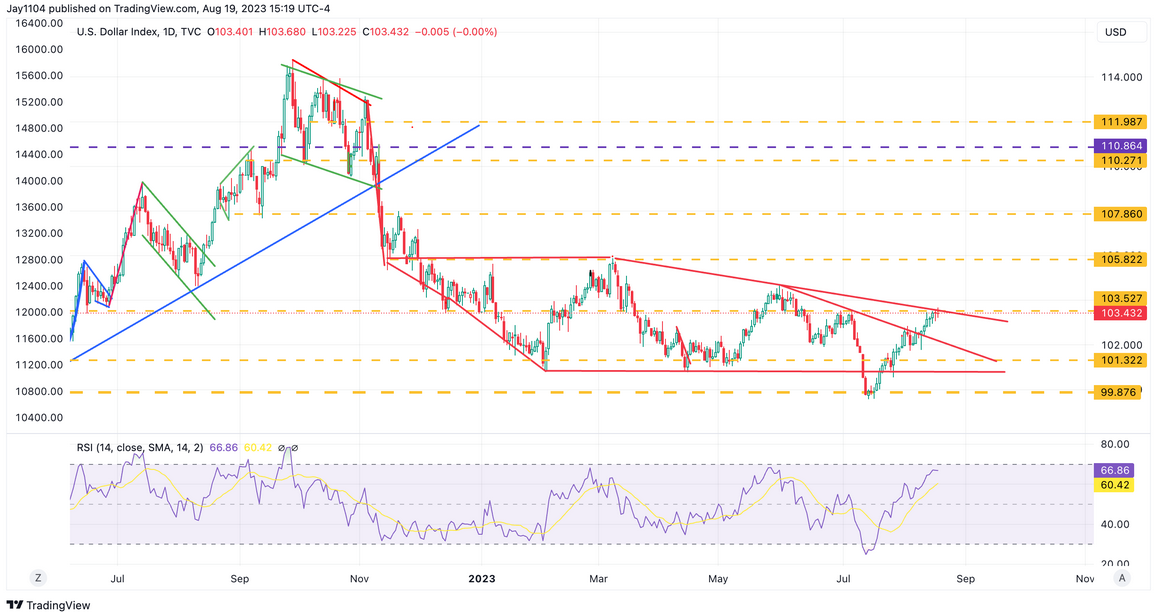
A breakout in the dollar would likely lead to a significant downward movement in the S&P 500, potentially triggering a substantial decline to commence at approximately 4,250 initially. This could be followed by a further descent to around 4,100, effectively retracing the index to its initial rally starting point of late May.

The Nasdaq could experience a more pronounced impact, potentially undergoing a retreat to approximately 13,100 within the coming weeks. This projection is driven by the anticipation that a robust dollar would contribute to the reversal of the accommodative financial conditions that have prevailed since the SVB incident. These eased financial conditions have played a pivotal role in driving the stock market’s upward momentum, fostering a risk-on environment, and facilitating favorable conditions for shorting volatility.
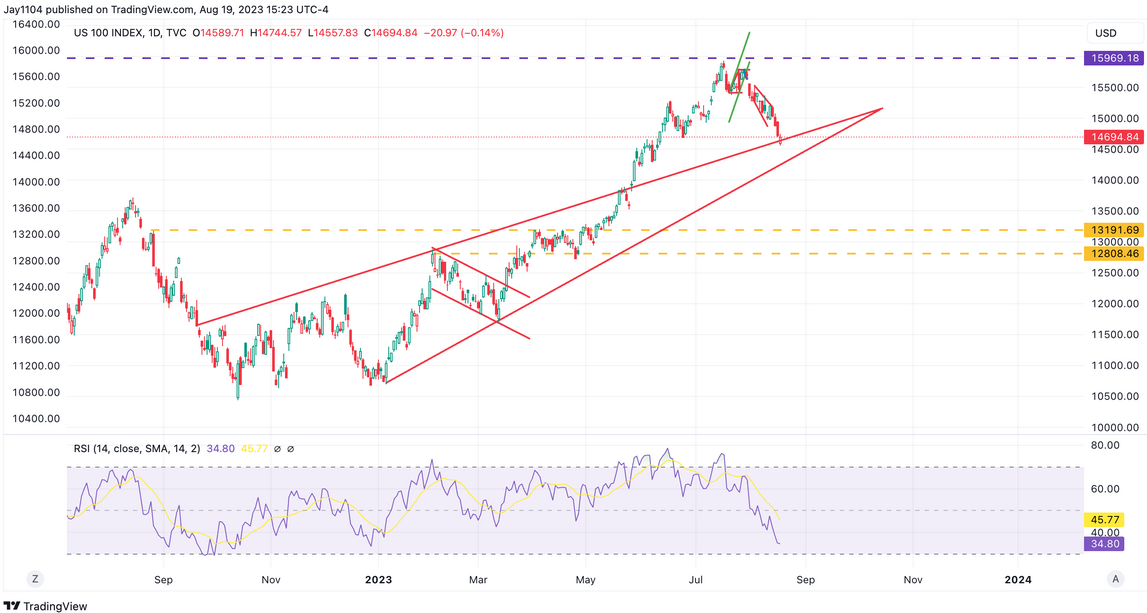
A short-volatility trade is when funds effectively sell or short index volatility, simultaneously taking long positions on the underlying components through options. These positions could then be hedged by acquiring long stock positions to maintain delta neutrality. If this scenario holds, the trade is already beginning to unwind. This is evident as the 1-month implied correlation basket has increased. It’s noteworthy that this movement follows a period of reaching some of the lowest levels since the Volamagdon event in January 2018.
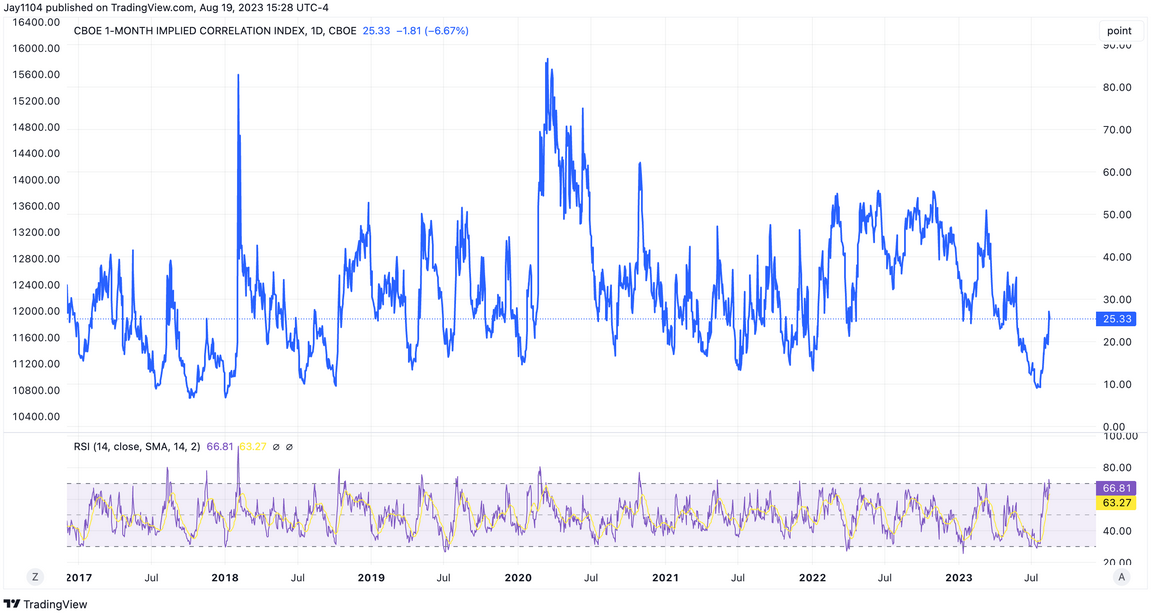
The crucial aspect of the trade might have revolved around Apple (NASDAQ:AAPL), particularly after the stock exhibited a highly orchestrated upward movement that appeared mechanistically generated. The ascent of Apple was quite remarkable but seemed disconnected from the fundamental underpinnings of the business. Rather, its surge was significantly influenced by its status as the largest stock within the S&P 500.
Once Apple breached its trend line after its earnings announcement, it signified a substantial shift in the dynamics of the short volatility trade. The breakdown of the trend line likely marked a turning point in the viability of the trade. It is conceivable that Apple’s trajectory could lead to a downward movement and a retest of the breakout from the multi-year trend line, with potential retracement toward the gap at approximately $166.
Similar observations apply to Microsoft (NASDAQ:MSFT), as it has departed from a broadening wedge pattern and seems to be headed toward the $306 mark, possibly descending even further to around $275 and revisiting the gap formed on April 25.
Notably, these price movements in Microsoft do not seem to reflect the fundamental dynamics of the business or its prospects in the field of artificial intelligence. Rather, they appear to align with a trading approach. Microsoft appears to have been a pivotal component that likely played a crucial role in driving the success of this trade, particularly from around mid-May onward.
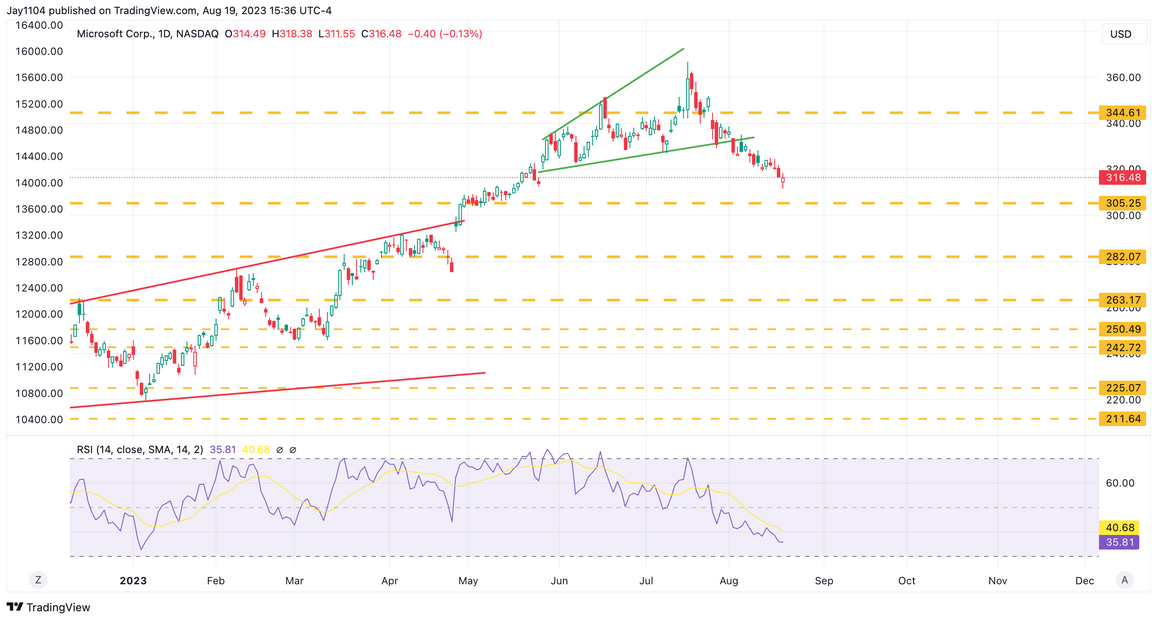
Nvidia (NASDAQ:NVDA) has undoubtedly been a standout stock during this rally, with the AI theme validating the notable surge in value. This rally was further substantiated by robust and optimistic guidance. However, several uncertainties about Nvidia remain, and I expect to find a resolution as the company’s results are reported this week. Interestingly, the significance of the results might be outweighed by the market’s prevailing optimism regarding Nvidia, as evident from the implied volatility of puts and calls.
The options market demonstrates a bias toward the upside for Nvidia. For instance, the implied volatility of the August 25 $480 calls stands at 101.14, while the $385 puts carry an implied volatility of 96.34. With the stock closing at $433, selecting a call and putting it equidistant to Friday’s closing price takes advantage of this skew in favor of calls.
It appears plausible that implied volatility will likely continue to rise over the week. This could lead to a scenario where Nvidia’s stock might face a downward trajectory unless the company reports exceptionally strong results and provides another round of impressive guidance. If not, the stock could potentially experience a decline.
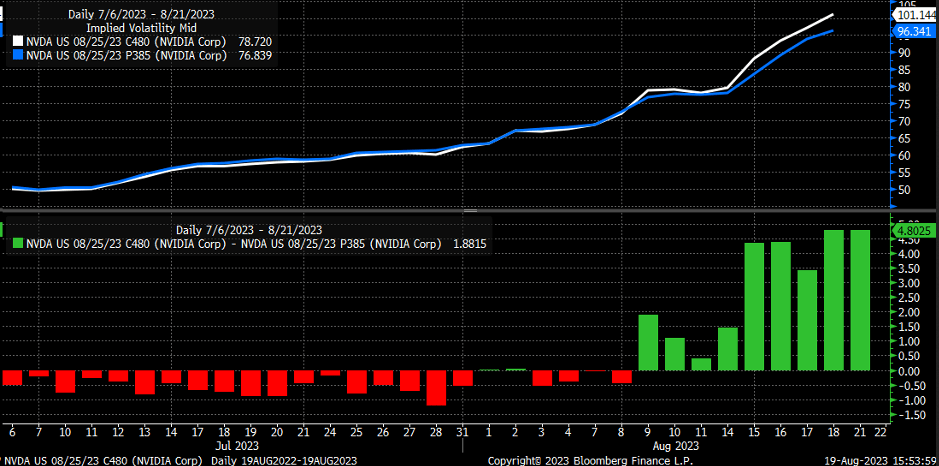
Once again, taking the same expiration date into account and approaching the skew from an alternative perspective, it’s evident that implied volatility is tilted in favor of the stock moving upward.
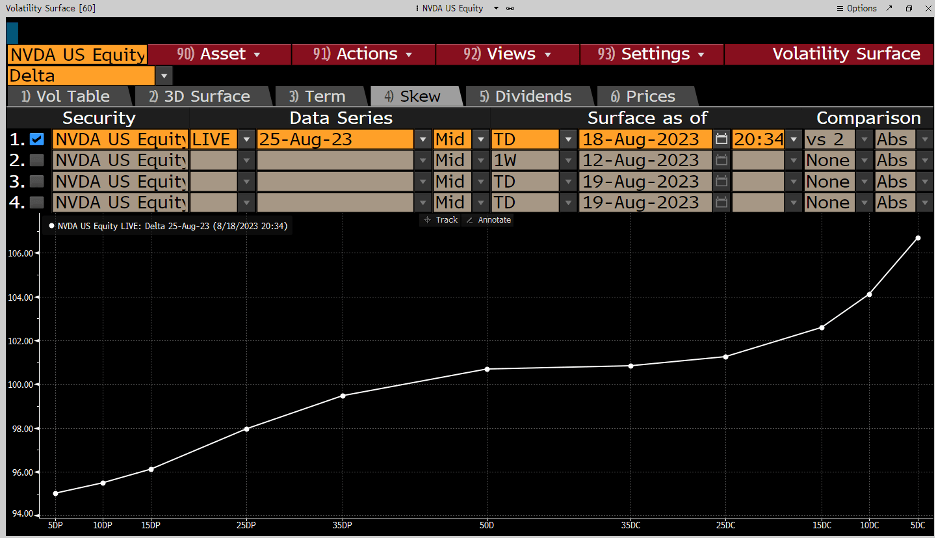
Indeed, the situation involves many outstanding calls at higher price levels, poised to experience significant devaluation once the company releases its results and implied volatility begins to decrease. As a result, a decline in the value of these calls may consequently trigger the unwinding of dealer hedges, sending shares lower.
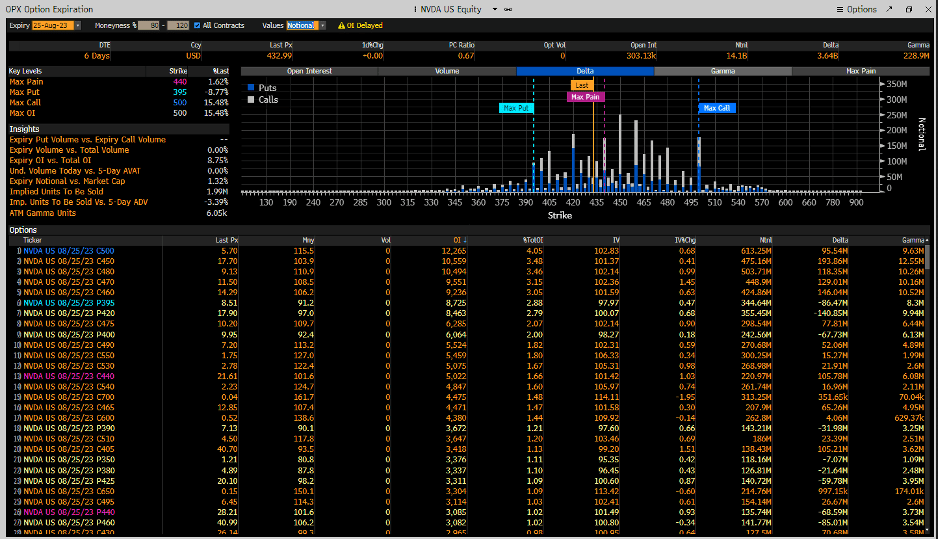
Nvidia’s significant support level is situated around $400, followed by another potential support level of around $375. It’s worth noting that if Nvidia delivers exceptional results, the stock will likely experience a move higher, rendering these support levels less critical.
However, if the results come in as expected or only slightly surpass expectations, the stock may face challenges, particularly given the substantial extent of its ascent during the preceding quarter. In such a scenario, meeting or slightly exceeding expectations may not be sufficient to maintain the current upward momentum.

This week’s Free YouTube Video:
Have a good week.
